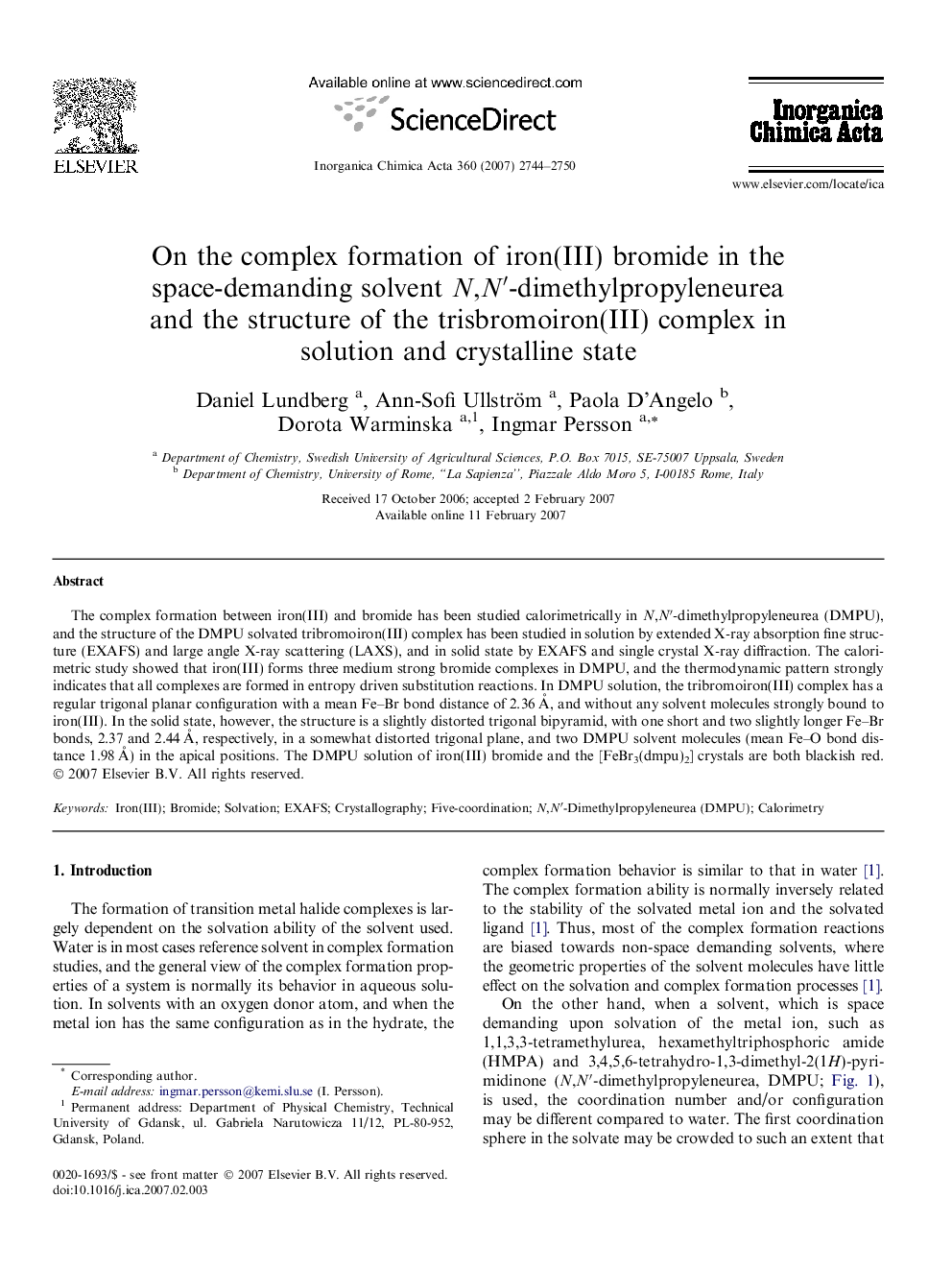| Article ID | Journal | Published Year | Pages | File Type |
|---|---|---|---|---|
| 1309650 | Inorganica Chimica Acta | 2007 | 7 Pages |
The complex formation between iron(III) and bromide has been studied calorimetrically in N,N′-dimethylpropyleneurea (DMPU), and the structure of the DMPU solvated tribromoiron(III) complex has been studied in solution by extended X-ray absorption fine structure (EXAFS) and large angle X-ray scattering (LAXS), and in solid state by EXAFS and single crystal X-ray diffraction. The calorimetric study showed that iron(III) forms three medium strong bromide complexes in DMPU, and the thermodynamic pattern strongly indicates that all complexes are formed in entropy driven substitution reactions. In DMPU solution, the tribromoiron(III) complex has a regular trigonal planar configuration with a mean Fe–Br bond distance of 2.36 Å, and without any solvent molecules strongly bound to iron(III). In the solid state, however, the structure is a slightly distorted trigonal bipyramid, with one short and two slightly longer Fe–Br bonds, 2.37 and 2.44 Å, respectively, in a somewhat distorted trigonal plane, and two DMPU solvent molecules (mean Fe–O bond distance 1.98 Å) in the apical positions. The DMPU solution of iron(III) bromide and the [FeBr3(dmpu)2] crystals are both blackish red.
Graphical abstractThe complex formation between iron(III) and bromide in N,N-dimethylpropyleneurea solution reveals marked stronger complexes than in water, and the structures of the trisbromoiron(III) complex solid state and solution are different with weaker solvation in solution.Figure optionsDownload full-size imageDownload as PowerPoint slide
